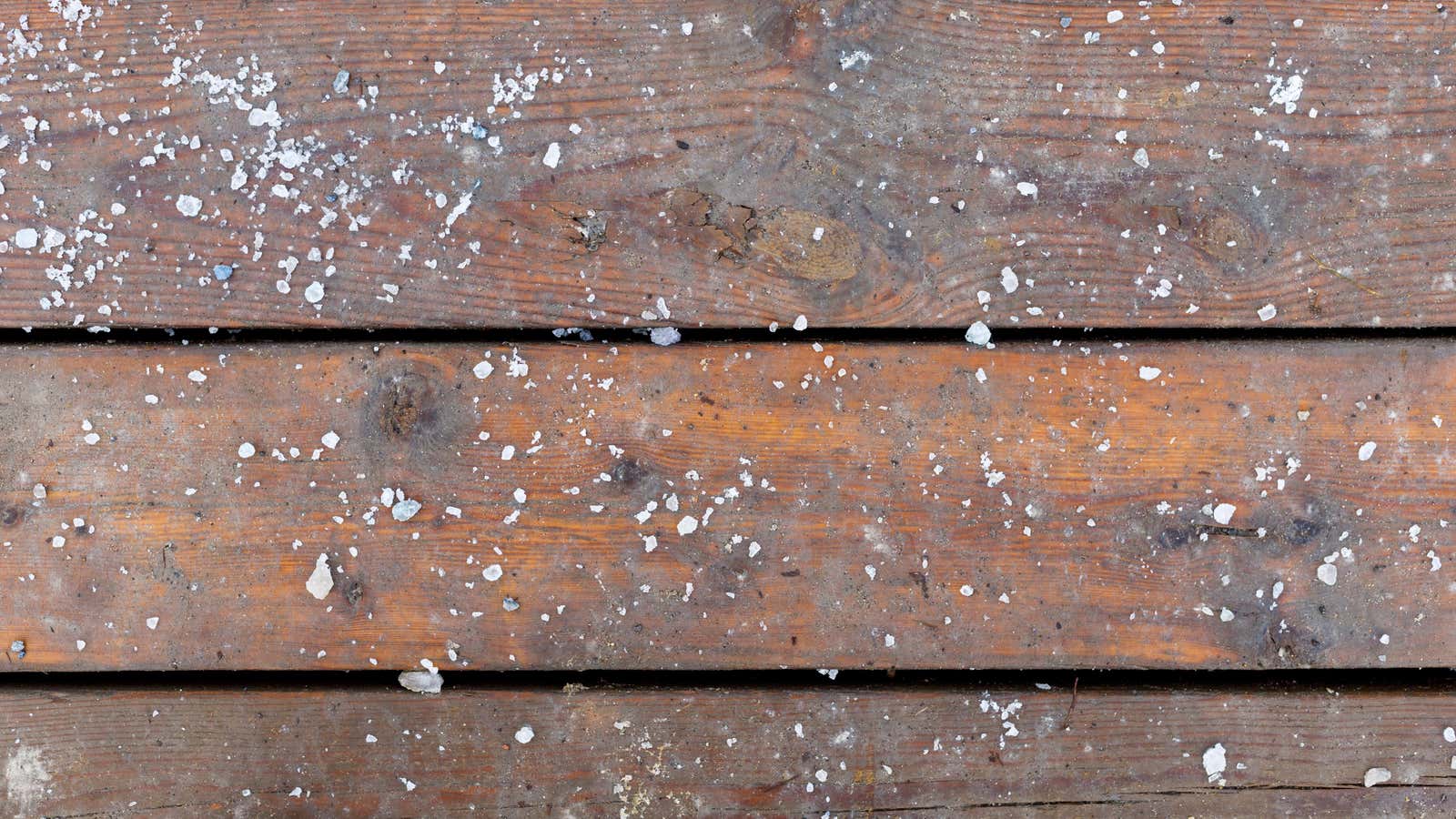The Right Way to Remove Salt Stains From the Floor

Salt is great for fighting ice outside, but for the same reason, salt is terrible for your floors. Even if you very often force people to remove their shoes when they enter your home, salt dust can still get on your hardwood flooring and other floor surfaces and can cause permanent damage if you don’t remove it. Here’s what you need to do to get rid of it properly.
According to SFGate , salt deposits don’t emulsify with soap and water, so don’t waste your time on this. What you really need is a weak acid. You need vinegar.
Before moving on to the vinegar, you first need to get rid of any salt crystals. You can do this by vacuuming or sweeping. You’ll also need to wipe up any melted snow or moisture you find, so grab an old towel and pat it dry. Don’t push it, as any large crystals inside can scratch the floor, and you can even push water through cracks in the floorboards, which can damage the floor.
Then mix the vinegar and warm water—half a cup of vinegar to a gallon of water. (If the salt streaks and stains are really bad, you can double the amount of vinegar.)
The way you will distribute the vinegar-water mixture will be the same as you would normally clean the floor, depending on what it is made of. For example, if it’s tile or vinyl, you can mop it up and let it sit for a few minutes to let the salt dissolve. If you’re dealing with wood, use a spray bottle to spritz the strips and then blot the moisture with a towel after a few minutes.
To prevent streaks from reappearing, keep an aerosol can of the mixture handy to deal with the resulting salt streaks. Be vigilant about snowmelt as well. Check under the door mat for leaks, wipe up moisture as soon as it does, and spray the area with a bottle to be sure.